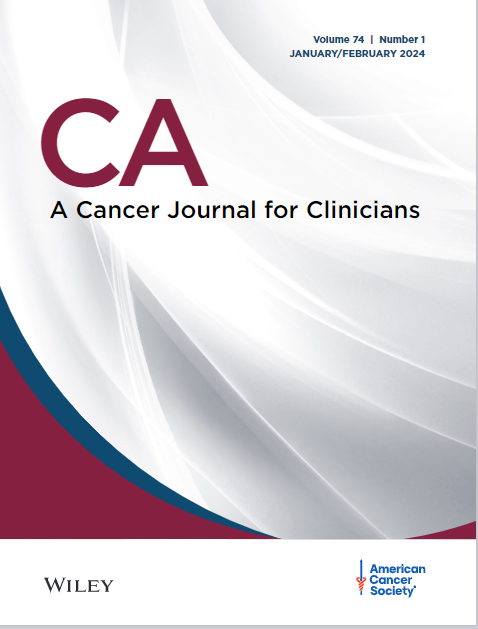抗体-药物缀合物:跨肿瘤组织的智能化疗递送
IF 503.1
1区 医学
Q1 ONCOLOGY
引用次数: 94
摘要
由于近年来发现了不同的癌症生物标志物,因此需要根据其组织学对肿瘤进行重新分类,并且现在根据特定的分子畸变和免疫标记定制治疗方法来治疗癌症。事实上,目前在临床实践中,多种组织学不可知的治疗方法被用于治疗患者,而不考虑其肿瘤的起源部位。与这种药物开发的新模式并行,在过去几年中,得益于偶联过程的工程改进以及新型连接物和有效载荷的引入,几种新型抗体-药物偶联物(adc)已被批准用于治疗实体肿瘤。随着认识到许多表面靶点在各种癌症组织中表达,以及现代adc的显着活性,这类药物越来越多地被评估为适合于组织学不可知的适应症扩展。例如,抗her2 ADC曲妥珠单抗deruxtecan在her2过表达的乳腺癌、胃癌、结直肠癌和肺癌中显示出令人信服的活性。其他新的和可能与组织学无关的ADC靶点包括滋养细胞表面抗原2 (Trop-2)和连接素-4等。在这篇综述文章中,作者总结了目前美国食品和药物管理局(fda)批准的针对实体肿瘤的adc,并讨论了adc多组织扩展带来的挑战和机遇。本文章由计算机程序翻译,如有差异,请以英文原文为准。
Antibody–drug conjugates: Smart chemotherapy delivery across tumor histologies
As distinct cancer biomarkers have been discovered in recent years, a need to reclassify tumors by more than their histology has been proposed, and therapies are now tailored to treat cancers based on specific molecular aberrations and immunologic markers. In fact, multiple histology‐agnostic therapies are currently adopted in clinical practice for treating patients regardless of their tumor site of origin. In parallel with this new model for drug development, in the past few years, several novel antibody–drug conjugates (ADCs) have been approved to treat solid tumors, benefiting from engineering improvements in the conjugation process and the introduction of novel linkers and payloads. With the recognition that numerous surface targets are expressed across various cancer histologies, alongside the remarkable activity of modern ADCs, this drug class has been increasingly evaluated as suitable for a histology‐agnostic expansion of indication. For illustration, the anti‐HER2 ADC trastuzumab deruxtecan has demonstrated compelling activity in HER2‐overexpressing breast, gastric, colorectal, and lung cancer. Examples of additional novel and potentially histology‐agnostic ADC targets include trophoblast cell‐surface antigen 2 (Trop‐2) and nectin‐4, among others. In the current review article, the authors summarize the current approvals of ADCs by the US Food and Drug Administration focusing on solid tumors and discuss the challenges and opportunities posed by the multihistological expansion of ADCs.
求助全文
通过发布文献求助,成功后即可免费获取论文全文。
去求助
来源期刊
CiteScore
873.20
自引率
0.10%
发文量
51
审稿时长
1 months
期刊介绍:
CA: A Cancer Journal for Clinicians" has been published by the American Cancer Society since 1950, making it one of the oldest peer-reviewed journals in oncology. It maintains the highest impact factor among all ISI-ranked journals. The journal effectively reaches a broad and diverse audience of health professionals, offering a unique platform to disseminate information on cancer prevention, early detection, various treatment modalities, palliative care, advocacy matters, quality-of-life topics, and more. As the premier journal of the American Cancer Society, it publishes mission-driven content that significantly influences patient care.

 求助内容:
求助内容: 应助结果提醒方式:
应助结果提醒方式:


